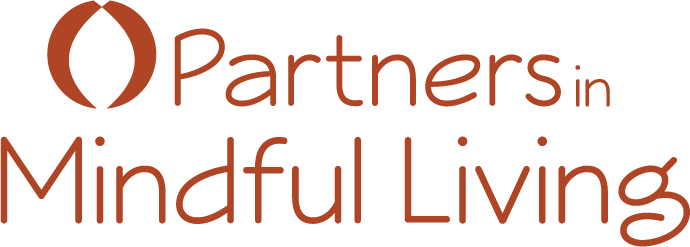
October 27, 2019
This post isn’t about me, although I’m using examples from my life. It’s about everybody who’s ever felt trapped in a life they didn’t consciously design, and they want more.
When we tolerate living in a world where we are getting less than what we want, well . . . that’s what we get. But sometimes we settle anyway. Settling is what happens when we talk ourselves out of taking the first step towards our dreams.
It’s just plain easier to settle for whatever shows up: a mediocre, unstimulating job; a less-than-exciting or grumpy partner; a half-assed or non-existent exercise or nutrition plan; a home without a sweet space for ourselves.
Settling takes less effort, time, and energy, and feels less scary than going after what we want and not getting it. Nobody wants to land back on square one, but sometimes that may be the better option—starting over may be the first step to achieving your dream.
We all have reasons for staying stuck. What kept me in gridlock for years was fear of not being able to support myself and my son, and strangely, an even greater fear of seeming arrogant. What would people think? Who was I to imagine that I could go out on my own and grow a client base that would support me? Those two hairy monsters—fear of failure and fear of being judged as arrogant—are my personal “familiars” and have been with me most of my adult life.
The list of other barriers to “going for it” is endless, depending on our genetics, personality, psychosocial history, environment, and cultural background. A friend admitted his barrier is guilt for doing something for himself when it might inconvenience someone else.
In her article, “7 Obstacles to Moving Forward,” writer, speaker, editor, blogger Candy Arrington lists fear, perfectionism, indecisiveness, anger, distraction, procrastination, and laziness as primary blocks. Career Coach Tanuja Ramchal adds three others: a need for approval; comparing oneself to others; and impatience in her article, “5 Barriers to Achieving Your Dreams and How to Overcome Them.”
Once you take the first step, none of the above will matter. Or, at least, it won’t matter enough to stop you. Taking the first step breaks through the doldrums that accompany settling. Sometimes one small movement can get the ball rolling again.
Here is how my fears expressed themselves, and how recognizing that they were smoke and mirrors changed everything:
Fear of Failure
For years, people encouraged me to expand my private practice. I put it off, exhausting myself working full-time for a community mental health center while maintaining a private practice on the side. The voice in my head said, “What if I do this and nothing changes? What if I invest time, energy, and money setting up a practice, and nobody comes? If I leave the Health Department, my safety net is gone!” That insidious voice lingered just close enough to the surface to keep me playing it safe.
I knew I wasn’t crazy or irresponsible. I began to convince myself this was something I could pull off. I balanced my need to play it safe with my burning desire to build a successful private practice that would contribute to the well-being of my clients.
I reminded myself that it wasn’t necessary to kill myself working two jobs. Mom raised my three siblings and me with a “work hard” mentality, but the last few years had been draining. Thinking about my intentions and creating a list of reasons why I wanted to expand the private practice, made the prospect less overwhelming.
I sought the reassurance of people I trusted. Their support was invaluable.
After deciding to go for it, my challenge was to build up my small private practice while I was still employed full-time. I figured out exactly how many sessions a month I would need to support myself after I left the Health Department. When I hit my mark, I gave my notice.
I left the day job and jumped into my private practice full-time in 2011. It took off. I was stunned and euphoric. At the same time, I didn’t regret not doing it sooner. I needed all the time it took to learn what I needed to learn.
My fears haven’t gone away. They are as annoying as ever. But it turns out they are smoke and mirror barriers that don’t have to stop me. When I remember to slow down and think things through, I see my fears for what they are–physical sensations that in some ways closely resemble feelings of excitement. That reframe has been lifechanging.
Fear of Seeming Arrogant
The arrogance thing is the result of having a dad who, at times, unknowingly hid his insecurities behind a screen of arrogance that I swore I would never replicate. His behavior made me hyperaware of the potential to push people away, rather than promote the connection I’m sure he was seeking.
Every time I considered going out on my own, I’d think, “That’s crazy! Who do you think you are? Get over yourself!” I had to push past that voice. Once I accepted that it wasn’t going to go away, I understood that it was more of an annoyance than a barrier, just like my fear of failure.
That voice representing my fears still shows up, but I have a different relationship with it today. I see it as a part of me that’s trying to keep me safe. It tends to keep a check on my ego and rein me in when I begin to overreach.
Even though that part of me doesn’t always work in my best interest, I don’t have to resist it—resistance gives it too much power. Whatever we resist, or put our attention on, persists and grows. The last thing I want to do is add fuel to my fears. Instead of holding my fears in contempt, or shaming myself, I am learning to understand them.
Two characteristics I have nurtured—consistency and perseverance—have kept me going.
Consistency tells people what they can expect from us.
Folks wait to see if you’re going to keep showing up. When you don’t, they don’t either. When you do, they do.
I’ve written this bi-weekly Seedlings blog post for over eight years. People know I’m going to keep showing up, and so they do, too.
Perseverance tells us what we can expect from ourselves.
Perseverance is about developing healthy habits. We give up when we forget this truism from Hal Elrod: “Most people don’t realize that the seemingly unbearable first ten-day period of a new habit is only temporary.”
I was terrified to push “publish” on the first post because I didn’t know if I could come up with number two. Eight years and over two hundred and forty posts later, I am still writing. It took a few months of discomfort to realize that I had more to share than I could have imagined.
Not settling is about taking the first step and keeping moving. It’s dealing with the fear of not knowing the outcome and moving forward anyway.
Maybe you have settled for something. The past doesn’t matter. The reality is you won’t know what you love or how your future will reward you, and others you care about, until you invest consistency and perseverance into getting it, or getting good at it!
Take the first step. When you’re scared, remind yourself that the intense discomfort of developing a new habit will pass. Be ready when the time is right. Take all the time you need, but don’t get side-tracked by empty or worn-out excuses. That may sound confusing, but life is a paradox, two seeming opposites living together, both of them true.
You don’t need permission or a “sign.” Settling is not your destiny—take it off the table!
Much love,
